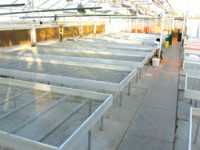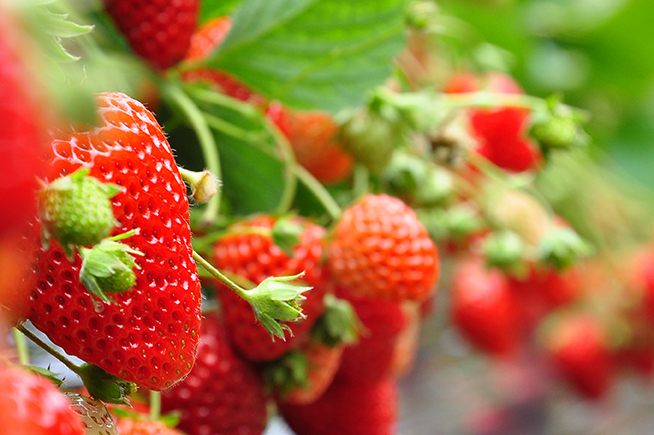Keep The Greenhouse Clean


Spring means that it is time to clean the greenhouse. It is important to realize that problems associated with pests, such as thrips and whiteflies, and diseases, especially Pythium root rot, arise due to lack of proper greenhouse sanitation. Moist surfaces in greenhouses support the growth of algae, which in turn harbors fungus gnats and shore flies.
Greenhouses should be cleaned soon after the completion of each season. This helps eliminate over-wintering microorganisms and pests. To help you remember what needs to be taken care of, here is a rundown of the steps to take to ensure a clean, sanitized greenhouse.
Sweep The Floor
Floors should be swept to remove all plant debris and accumulated soils. Make sure to clean the trench drains. After pulling the weeds out of the cracks and trenches, it is also helpful to sprinkle water softener pellets or regular sidewalk salt in them to control reemergence of weeds like wood sorrel, bittercress, and common chickweed. Disinfecting the floor is an effective method to prevent disease causing organisms like Pythium and Rhizoctonia.
Management of algae is an ongoing problem that needs to be constantly addressed within the greenhouse environment. In addition to harboring insect pests and microbial pathogens, algae growth also causes wet and slippery conditions. The best way to reduce the incidence of major algae outbreaks is to avoid over watering and excessive fertilizer run-off. Products such as Green-Shield (ammonium chloride, Whitmire Micro-Gen) and Physan 20 (quaternary ammonium chloride salts, Maril Products Inc.) are commonly used to control algae.
Wipe Down Benches
Most greenhouse benches are made of wire, which is easy to clean and disinfect. Benches should be thoroughly cleaned and wiped before starting production. Products such as chlorine bleach, Green-Shield, Physan 20, Oxidate (hydrogen dioxide, BioSafe Systems), chlorine dioxide, etc. can be used to sterilize greenhouse benches. Carefully read and follow label instructions.
Make sure that the bench surface is evenly soaked with the disinfectant and allow it to air dry for a sufficient amount of time. Although it is not possible to use disinfectants on a routine basis, it is highly advisable to use them between crop cycles. This helps to avoid phytotoxicity to plants due to disinfectant use.
Keep Containers Free Of Disease
It is preferable to use new containers for each crop; however, for economic and other reasons, some growers re-use their pots, containers, and flats multiple times. Whenever old containers are used, it is critical to make sure that they are free of disease pathogens. If the previous crop had a disease problem, it is likely the disease can spread to new transplants or other greenhouse vegetables through leftover soil particles. Organisms like Pythium and Rhizoctonia can survive in soil particles and infect plants. All containers should be thoroughly washed to remove plant debris and soil particles after which they should be treated with a greenhouse disinfectant.
A 10% solution of household chlorine bleach could be used, but its activity period is short compared to other disinfectants. To obtain better results, soak containers for a minimum of 30 minutes and finally rinse with water. Rinsing helps to avoid phytotoxicity to plants. Some of the disinfectants mentioned above could also be used to effectively sterilize containers.
Healthy and vigorous plants are vital for successful crop production. A clean greenhouse, providing a conducive environment for optimum plant growth, will produce strong and healthy plants, which, in turn, will increase profits for growers.








